VERBESINA
Verbesina
L., Sp. Pl. 2: 901. 1753; Gen. Pl. 5: 384. 1754; Strother, Fl. North Amer. @ eFloras.org 21: 106.
Annual, perennial shrubs or trees. Stem usually erect, usually branched (internodes sometimes winged). Leaves alternate, opposite, sometimes whorled, petiolate or sessile, leaf blades mostly rhombic, deltate, ovate, elliptic to lanceolate or lance-linear, sometimes pinnately or palmately lobed, ultimate margins subentire or toothed. Capitula radiate or discoid, borne singly or in corymbiform, dichasiiform or paniculiform arrays. Involucres hemispheric, turbinate, campanulate to saucer-like. Phyllaries persistent, 9-50 in 1-4 or more series, subequal to unequal. Receptacle flat to convex to conic, paleate. Ray florets: 0 or (1-) 5-30, either pistillate and fertile or styliferous and sterile or neuter. Corolla yellow to orange or ochroleucous. Disc florets: 8-150 (-300), bisexual, fertile; corollas usually concolorous with rays, tubes much shorter than or +/- equalling funnelform or campanulate throats, lobes 5, +/- deltate to lance-deltate. Cypselae +/- flattened, orbiculate, obovate or oblanceolate to elliptic, usually winged. Pappi persistent, usually of 2, +/- subulate scales or awns, sometimes 0.
350 species
Verbesina encelioides
Verbesina encelioides
(Cav.) Benth. & Hook. f. ex A. Gray, Bot. California 1: 350. 1876; Fl. North Amer. @ eFloras.org 21: 108; Fl. Zimbabwe; V. encelioides subsp. encelioides (Cav.) Benth. & Hook. f. ex A. Gray, Bot. California 1: 350. 1876; Ximenisia encelioides Cav., Icon 2: 60. t. 178. 1793.
Annual herbs, 30-120 (-150) cm tall, odour unpleasant. Stem branched, internodes not winged, densely adpressed pubescent. Leaves alternate distally and opposite proximally; petiole up to 3 cm long, irregularly winged, auriculate at base, adpressed pubescent; leaf blades 3-12 (-21) cm x 1.5-6 (-9) cm, deltate-ovate, rhombic or lanceolate, margin irregularly coarsely toothed, apices acute to acuminate, leaf blade and petiole adpressed hairy. Capitula radiate, ca. 6 cm across, borne usually singly (sometimes 2-3+ in loose cymiform or corymbiform arrays) terminally on long peduncles, up to 21 cm long, peduncle adpressed hairy, subtended by leaf-like bract. Phyllaries 12-19 in number, in 2 or 3 +/- equal or unequal series, 10-37 mm x 2-5 mm (innermost sometimes short and narrow, 10 mm x 2 mm), erect or spreading, linear-lanceolate, acute, +/- adpressed-pubescent. Receptacle +/- conic, paleate, paleae persistent, 6-10 mm long, lanceolate, conduplicate, acuminate, margin ciliate. Ray florets: 8-12 (-15), orange-yellow, pistillate, fertile, 2-3 cm long; corolla limb ca. 2.4 cm x 1 cm, obovate, 3-toothed; tube ca. 3 mm long, hairy. Ovary ca. 3 mm long; style 3 mm, filiform, 2-branched, lobes linear. Cypselae 3-4 mm x ca. 1 mm, obovoid, 3-sided, wings 0, pappus 0, all surface with many glands. Disc florets: 80-150+, +/- 1.5 cm long, bisexual, fertile. Corolla yellow, 5-6 mm long, tube (ca. 1 mm long), much shorter than funnelform throat, lobes 5, +/- deltate, recurved, ca. 1 mm x 1 mm, pubescent at base. Anther yellow to light brown, appendages narrow triangular, base sagittate. Ovary ca. 4 mm long, flat, densely hairy; style 6-7 mm long, 2-branched, recurved. Disc cypselae 6-8 mm x 4-5 mm, obovate, flattened, brown or black, soft hairs, surface with small glands; wings wide, hairy. Pappus 2, linear, subulate, 0.5-1 mm.
Common Names: Golden Crown-beard, Gold Weed, Wild Sunflower, Cowpen Daisy, Butter Daisy, Crown beard, American dog weed, South African Daisy
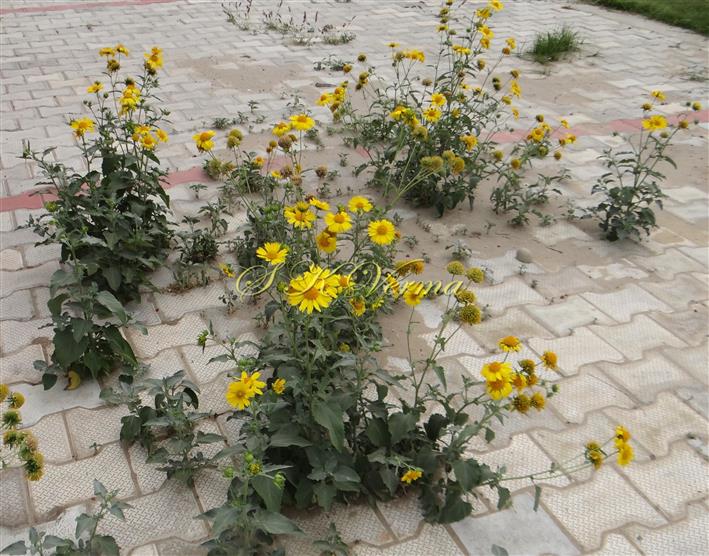
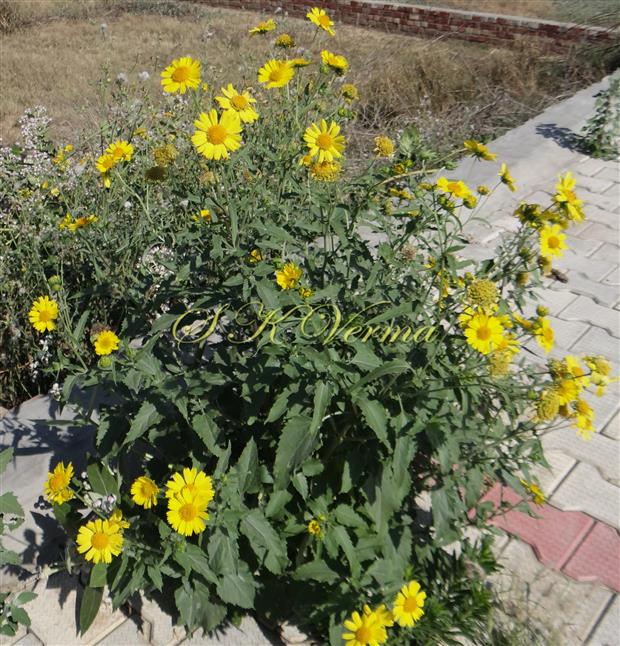
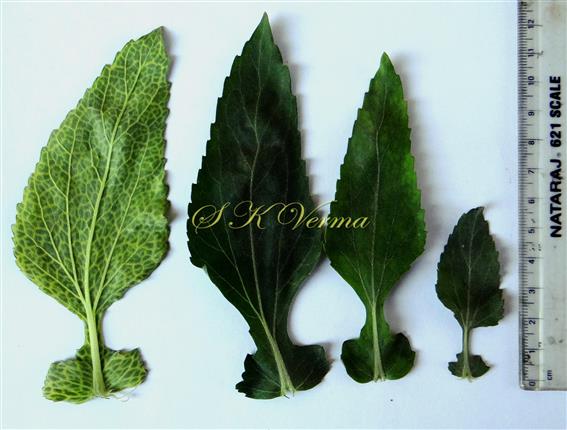
-4166.jpg)
-4164.jpg)
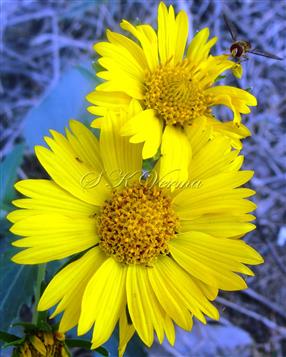
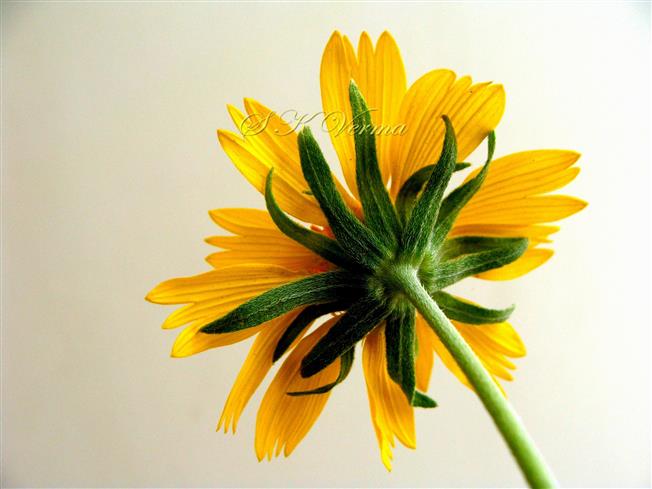
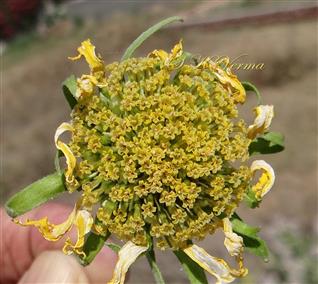
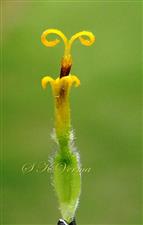
-DSC00650.jpg)
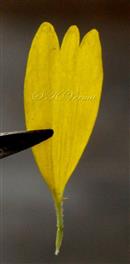
 with ray achenes-DSC08938.jpg)
-DSC08943.jpg)
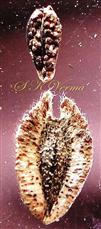
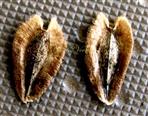
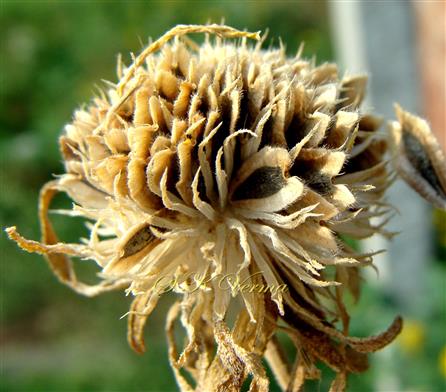
-4907AA.jpg)




-4166.jpg)
-4164.jpg)




-DSC00650.jpg)

 with ray achenes-DSC08938.jpg)
-DSC08943.jpg)



-4907AA.jpg)